Discover In Our Defence
In Our Defence

In Our Defence
Author: India Today Podcasts
Subscribed: 122Played: 1,312Subscribe
Share
Copyright © 2025 Living Media India Limited
Description
In Our Defence is a weekly podcast that breaks down wars, weapons, and the world of military power with clarity, curiosity, and zero jargon.
Hosted by journalist Dev Goswami, each episode features sharp, story-rich conversations with leading defence experts, offering distinct perspectives and nuances on how nations prepare, fight, and defend.
From battlefield strategy and military tech to geopolitics, intelligence, and national security -- In Our Defence focuses on conversations that are grounded, engaging, and made for curious minds.
No fluff. No noise. Just a clear line of sight into the world of conflict.
Hosted by journalist Dev Goswami, each episode features sharp, story-rich conversations with leading defence experts, offering distinct perspectives and nuances on how nations prepare, fight, and defend.
From battlefield strategy and military tech to geopolitics, intelligence, and national security -- In Our Defence focuses on conversations that are grounded, engaging, and made for curious minds.
No fluff. No noise. Just a clear line of sight into the world of conflict.
175 Episodes
Reverse
The new spy thriller Dhurandhar has sparked a massive controversy. The Adtiya Dhar film explores the concept of 'sleeper spies' -- spies who are deeply embedded in a target country's society. On this episode of In Our Defence, host Dev Goswami and national security expert Sandeep Unnithan look at what the film gets right and wrong about this aspect of espionage. The two talk about the intersection of ISI and Pakistani underworld that the film portrays and discuss how that is a hat-tip to the unholy alliance between the Pakistani deep state and Dawood Ibrahim that was forged in the early 1960s. The two also look back at the stories of some of the world's most legendary sleeper agents such as Mossad's Eli Cohen and Soviet Russia's famous 'Cambridge Five'. Also on this episode is a look at how the Research and Analysis Wing's (RAW) operations evolved in Pakistan under several Prime Ministers and what intelligence agencies are actually asked with. Produced by Areeb Raza Sound mixed by Suraj Singh
On paper, Field Marshal Asim Munir is the most powerful man in Pakistan. He has the Army, the intelligence agencies, and a constitutional amendment that effectively grants him unlimited power. So why is he seemingly terrified of a 73-year-old man locked in a 6x8 cell in Adiala Jail? In this episode of In Our Defence, host Dev Goswami and defence expert Sandeep Unnithan peel back the layers of Islamabad's power struggle. Is the conflict actually a deep-rooted ethnic clash between the Punjabi-dominated Army and Imran Khan's Pashtun base? The Adiala Curse: Why does every Pakistani Prime Minister eventually fall out with the Army? The God Complex: What ingredients create a Pakistani General who thinks he is the saviour of Pakistan? The Endgame: Does Munir keep Khan locked up forever or will a 'Black Swan' event completely upend Pakistani politics? Produced by Areeb Raza Sound mixed by Rohan Bharti
India is set to commission its third -- and most powerful -- nuclear-powered ballistic missile submarine, the INS Aridhaman (codename: S4). But this isn't just another ship joining the fleet, it marks a critical tipping point in India's national security architecture. INS Aridhaman is the most complex and devastating weapon to exist in India's weapons arsenal. In this episode of In Our Defence, host Dev Goswami and defence expert Sandeep Unnithan decode the secrecy shrouding the Advanced Technology Vessel (ATV) project. They explain the "Rule of Three" (why you need three subs to keep one at sea), the massive upgrade in firepower with the K-4 missiles, and how a memo during the 1960s kickstarted India's quest for nuclear-powered ballistic missile submarines. Key discussion points: The Upgrade: Why Aridhaman is bigger, deadlier, and carries double the missiles of INS Arihant. The Range War: How the K-4 missile (3,500km) finally allows Indian subs to target threats without leaving the safety of home waters. The History: PN Haksar memo and the birth of the Indian nuclear submarine program. The Command: Who actually presses the red button? (Hint: It's not the Navy Chief). Tune in for a deep dive into the "Silent Service" that protects India from the deep. Produced by Taniya Dutta Sound mixed by Aman Pal
Seventeen years ago, India was shaken when Lashkar-e-Taiba terrorists launched 12 coordinated attacks across Mumbai, striking the Taj Mahal Palace Hotel, Chabad (Nariman) House, and other locations in the country’s financial capital. The assault killed 166 people and injured over 300. Nine of the ten terrorists were killed, while the lone surviving attacker, Ajmal Kasab, was captured alive. In this episode of In Our Defence, host Dev Goswami and national security expert Sandeep Unnithan revisit the assault that became the Kargil of India’s internal security. They take you deep inside the shadowy world of terrorist training, high-risk counter-terror operations and the elite response mechanisms that shaped India’s modern security doctrine. From Special Forces–style training used by the attackers, to the MARCOS team’s first response and the intense close-quarters battle inside the Taj Hotel and Chabard House. Unnithan revisits the tactics, planning and coordination failures that emerged during the 26/11 Mumbai Attack, offering rare insights into what changed and what still hasn’t. The two discuss: - Terrorist training methods -Frontline decision-making -The evolution of India’s counter-terror capabilities Tune in! Produced by Taniya Dutta Sound mixed by Aman Pal
On November 21, an Indian Air Force Tejas fighter jet performing aerial manoeuvres at the Dubai Airshow crashed, killing its pilot, Wing Commander Namansh Syal. This is the second crash involving the indigenous aircraft in its 24-year history but the first to result in a fatality. The previous Tejas crash took place in Jaisalmer in March 2024 when the pilots ejected safely. With the IAF ordering a court of inquiry, this bonus segment of In Our Defence sees host Dev Goswami and national security expert Sandeep Unnithan break down what the accident reveals about India’s indigenous defence production and the future of the Tejas programme. Tune in! Produced by Taniya Dutta Sound mixed by Suraj Singh
With the release of the Farhan Akhtar-starrer 120 Bahadur, the spotlight returns to the Battle of Rezang La -- one of the bravest last stands in military history. But the 1962 India-China war was much more than just one battle. It was a geopolitical storm involving a "Forward Policy," a distracted America, and a political leadership caught off guard. In this deep-dive episode, host Dev Goswami and national security expert Sandeep Unnithan will peel back the layers of the 1962 conflict. They discuss the tactical realities of Major Shaitan Singh’s Charlie Company, the mystery of the "missing" Indian Air Force, how and why the Indian Army was handed a solid defeat, the strange connection between the Himalayas and the Cuban Missile Crisis, and, of course, whether this indeed was Nehru's 'Himalayan Blunder'. In this episode, Dev and Sandeep discuss: - The Real Rezang La: How 120 men of the 13 Kumaon held off thousands of Chinese troops at 18,000 feet without winter gear. - The McMahon Line: Who drew it, why it was flawed, and why a "thick line on a map" led to war. - The Geopolitics: Did the Panchsheel Agreement lull Nehru into a false sense of security? What was the "Forward Policy"? - The Cuban Connection: How Mao Zedong timed the attack to coincide with the Cuban Missile Crisis to ensure US silence. - Classified History: What is the Henderson Brooks-Bhagat Report, and why does the Indian government refuse to declassify it 60 years later? - The Chinese Perspective: Why Beijing calls this a "Self-Defence Counterattack" and why they unilaterally withdrew after winning. Whether or not you plan to watch 120 Bahadur, this is your comprehensive crash course on the war that changed India forever. Tune in! Produced by Taniya Dutta Sound mixed by Rohan Bharti
A car explodes near Delhi's Red Fort and the trail runs through Srinagar posters, Faridabad storehouses, and an alleged "white-collar" module featuring multiple doctors. In this episode, host Dev Goswami and national security expert Sandeep Unnithan take their first impressions of the deadly terror attack that has revived scary memories of blasts in India's urban centre. The two examine what we know (and don't) about the Red Fort attack, why the government's initial messaging stayed deliberately measured, and zoom out to Field Marshal Asim Munir's "thousand cuts" doctrine that the Pakistani military boss seems to have adopted. Tune in! Produced by Taniya Dutta Sound mixed by Aman Pal
Donald Trump says China, Russia and Pakistan are "testing nuclear weapons". And that is why he's told the Pentagon to immediately prepare to test the US's nuclear weapons. In this episode, host Dev Goswami and national security expert Sandeep Unnithan unpack what counts as a nuclear test in 2025, who's actually doing what at their test sites, and what a US return to explosive testing would mean for India, the CTBT, and global stability. The two cover: - Why does Trump want to carry out nuclear testing? Are Russia, China, and Pakistan really carrying out secret nuclear tests? - Cold tests vs hot tests: Why the world doesn't really need 'explosive' nuclear tests anymore? - Why India feels satisfied with its comparatively lower number of nuclear tests vis a vis the rest of the world? - Should India take a re-look at its nuclear doctrine that vows no first use? - What global treaties on nuclear testing really achieved? - And finally, what happens if the US actually carries out a nuclear test? Tune in! Produced by Taniya Dutta Sound mixed by Suraj Singh
India's Navy faces two very different fronts at sea. To the west, it has history and geography on its side against Pakistan -- think Karachi aflame in 1971 and quiet coercion in Kargil. To the east, a bigger, busier chessboard: the Chinese PLAN surging into the Indian Ocean and sniffing around the Bay of Bengal. On this episode, national security expert Sandeep Unnithan joins host Dev Goswami to separate swagger from substance: Pakistan's problem of not enough 'sea room', what the Indian Navy did in 1971 and Kargil, how INS Vikrant shaped the '71 East theatre, and whether modern India should "pop up" in the South China Sea or lock down the Andamans. On this episode: - Pakistan's coastline and its geographical vulnerability - 1971 War: Op Trident & Op Python; Karachi burning, costs and consequences - Kargil: the Navy's "quiet pressure" playbook - Op Sindoor: what a modern surge looks like and deterrence without tripping red lines - China, the Indian Ocean Region, and the Indian Navy area of influence - Can India routinely show up east of Malacca or is gatekeeping the chokepoints the smarter flex? Produced by Taniya Dutta Sound mix by Rohan Bharti
Once Islamabad's (or Rawalpindi's) protégés, the Taliban are now exchanging gunfire with Pakistan. The recent clashes mark the deadliest fighting between the two since Taliban seized control of Afghanistan in 2021. What changed? In this episode, host Dev Goswami and national security expert Sandeep Unnithan unpack the clash along the Durand Line -- a fight tangled in Pashtun identity, militant kinships, and Pakistan's own Frankenstein problem. The two trace the origin the Taliban, explain how it is wrongly believed to be synonymous with the Al Qaeda, and explore how its Pashtun roots put it at odds with Pakistan's military elite. Also a topic of discussion is the TTP (Tehreek-e-Taliban Pakistan) and how it seems to be punching above its weight. And finally, the episode looks at India's cautious recent outreach to Kabul and how it fits into this very messy map. Tune in! Produced by Taniya Dutta Sound mixed by
Two years after Oct 7, a US-brokered ceasefire takes hold in Gaza: living Israeli hostages are freed, the IDF pulls back to a predefined "yellow line," leaders fly into Sharm el-Sheikh to toast Donald Trump, and we hear talk of a "new Middle East." But how durable is this peace and what do we make of India's tightrope act? In this episode, Dev Goswami and national security expert Sandeep Unnithan break down: - What the Gaza deal actually does and what it carefully avoids - Can deal ensure lasting peace or is this yet another ebb in the decades-long cycle of violence - Who governs Gaza next: PA technocrats, an interim force, or a messy vacuum - Whether two years of devastation have become recruitment fuel for Hamas or its successor - What's at stake for India and why PM Modi chose to skip the Egypt summit Tune in! Produced by Taniya Dutta Sound Mixed by Rohan Bharti
A fresh jolt in West Asia: Pakistan and Saudi Arabia have signed a Strategic Mutual Defense Agreement. Is it just a formalisation of a decades-old security relationship or the birth of an 'Islamic NATO'? On the latest episode of In Our Defence, host Dev Goswami and national security expert Sandeep Unnithan unpack what's real, what's posturing and why the announcement landed just as Israel struck targets in Qatar, a US ally, trying to mediate with Hamas. The episode especially explores what the agreement means for India. The two discuss: -Trace the Pak-Saudi security history and what's actually "new" in this pact -Decode India's response and how New Delhi should read Riyadh's move -Ask the uncomfortable bit: money flows to military to militants? -Explore the nuclear chatter: Pakistani umbrella for Saudi? -Revisit the long-running theory of US contingency plans around Pakistan's nukes -Game out an "Op Sindoor 2.0" scenario: where does Saudi sit if India-Pakistan tensions flare? Tune in! Produced by Taniya Dutta Sound Mixed by Aman Pal
The Indian Air Force has retired the MiG-21 – the iconic Soviet-era fighter aircraft—that became the most produced supersonic jet in history and the backbone of the IAF. The Mig-21 trained generations of Indian Air Force pilots and defended India’s skies for six decades. Recorded around Mig-21’s farewell at Air Force Station, Chandigarh, this special episode of In Our Defence with national security expert Sandeep Unnithan dives into the jet’s history, upgrades, combat stories, the debate over safety, and its legacy. Host Dev Goswami and Sandeep unpack how a 1960s Soviet interceptor became India’s backbone, why it attracted the “flying coffin” label, what the Bison upgrade really changed, and how the MiG-21’s dominance shaped IAF training and doctrine. Tune in! Image of the first women IAF fighter pilots- Avani Chaturvedi, Bhawana Kanth and Mohana Singh Produced by Taniya Dutta Sound Mix by Aman Pal
Kamikaze drones, or loitering munitions, have been everywhere in recent conflicts, from the Russia-Ukraine war to battles in the Middle East. They're cheap, deadly, and changing how militaries think about strikes and defence. In this episode, host Dev Goswami sits down with defence journalist Sandeep Unnithan to trace the idea back to its WWII origins and ask why India, despite having a buzzing drone startup scene, still doesn't have its own kamikaze drones. The two break down: - What kamikaze meant in WWII and how the idea evolved into unmanned drones. - How these drones are being used in Ukraine and what lessons India should take. - Why India relied on Israeli Harop drones in Operation Sindoor. - Procurement and development blind spots that explain India's slow adoption. - Why India urgently needs to build and maintain a credible kamikaze drone force. Produced by Taniya Dutta Sound Mix by Suraj Singh
India is betting big on the Holistic Development of Great Nicobar Island, a decades-long project to build a massive transshipment port, a new airport, a power plant, a township, and associated military build-up at the doorstep of the Strait of Malacca, the world’s busiest shipping lane.The project had been flying under the radar until this month when concerns of ecological damage and impact on tribal population put the spotlight on this venture.On this episode, host Dev Goswami and national security expert Sandeep Unnithan dive deep into this project and explore why this could be India’s most significant infrastructure project in history.What makes the Malacca Strait the most crucial chokepoint in global trade?And how does Great Nicobar give India a leg up in its long-running maritime rivalry with China?The two decode the geopolitics of the Indian Ocean, the ecological and tribal concerns around the project, and why the next big global contest may not be on land, but at sea.Produced by Taniya DuttaSound Mix by Rohan Bharti
In this episode of In Our Defence, host Dev Goswami and national security expert Sandeep Unnithan unpack the debate over theaterisation -- the buzzword that has divided India's armed forces for years. Indian Air Force chief Air Chief Marshal Amar Preet Singh's recent comments about India not needing theaterisation right now have once again opened a debate that was meant to have been settled with the appointment of the Chief of Defence Staff. On this episode, Dev and Sandeep go from the origins of theatre commands in World War II, to India's 17 separate service commands, to the Air Force's worries -- and the famous committees (Kargil Review, GoM, Naresh Chandra, Shekatkar) that studied this reform to death. The two explore: - What is theaterisation and why does it matter? - Why is the Indian Air Force pushing back? - Did General Bipin Rawat's death stall the project? - What role do decades of committees and bureaucratic delays play? - And most importantly, does India actually need theatre commands for future wars? Produced by Taniya Dutta Sound Mix by Rohan Bharti
India's latest Agni-V missile test, just days before the PM's visit to China, got tongues wagging this week. Was it a message to Beijing? Islamabad? Or both? In this episode of In Our Defence, national security expert Sandeep Unnithan joins host Dev Goswami to unpack the story of how and, more importantly, why India became a nuclear power. From the first "Smiling Buddha" test in 1974 to the Pokhran-II Shakti series in 1998, and today's Agni-V, this is the story of India's nuclear weapons programme. Produced by Taniya Dutta Sound Mix by Suraj Singh
Five years after the deadly Galwan Valley clash, India and China are suddenly warming up again. Flights are restarting, a Modi-Xi meeting is on the cards, and Beijing says that the setbacks of the past years were not in anybody's interests. But is this thaw for real or just another chapter in the freeze-thaw cycle of India-China relations? In this episode of In Our Defence, host Dev Goswami and national security expert Sandeep Unnithan unpack: - The Galwan clash and Operation Snow Leopard - India's mountain warfare edge vs China's infrastructure push - Why negotiations dragged on for 5 years - What Beijing and Delhi each gain from a "thaw" - The China angle during India's Operation Sindoor - The Donald Trump factor and whether it's pushing India and China closer
Pakistan's army chief Asim Munir recently made wild headlines in the US, casually threatening nuclear apocalypse at a private dinner. He claimed that if India ever attacked, Pakistan would "take half the world down" with it. Yes, really. In this episode, defence journalist Sandeep Unnithan joins host Dev Goswami to unpack what's behind this latest nuclear sabre-rattling. Why would Pakistan's top general say something so reckless -- and why now, and in Florida of all places? We also dive into: -The factors behind the US's new-found but old love for the Pakistan military -The "Mercedes vs dump truck" analogy -The US designation of Baloch Liberation Army as a terror group, timed right after Munir's visit -How Pakistan developed nukes so fast after India's 1998 Pokhran -The legend of US control over Pakistan's nuclear button -How worried should India be about Asim Munir's Produced by Garvit Srivastava Sound mixed by Rohan Bharti
India's buying cheap Russian oil. Trump's not happy. And now he's slapped 50% tariffs on Indian goods. Officially, it's about funding Russia's war machine. Unofficially? It might be about one man's ego, a Nobel Peace Prize dream, and India refusing to play along. From the MEA's unusually sharp statement to the PM's vow to "pay any price to protect farmers," we unpack the real stakes amid the India-US showdown over tariffs. - Is India's "multi-alignment" foreign policy reaching breaking point? - Why agriculture is a red line in India-US trade talks. - How diplomats handle unpredictable leaders like Donald Trump. - The shift in India's diplomatic tone - and why a career diplomat as EAM matters. - Will India hit back with counter-tariffs or play the long game? Veteran national security journalist Sandeep Unnithan joins host Dev Goswami to decode this latest round of diplomatic warfare -- from South Block's air-conditioned strategy rooms to the high-stakes oil politics of Moscow and Washington. Produced by Garvit Srivastava Sound mixed by Rohan Bharti


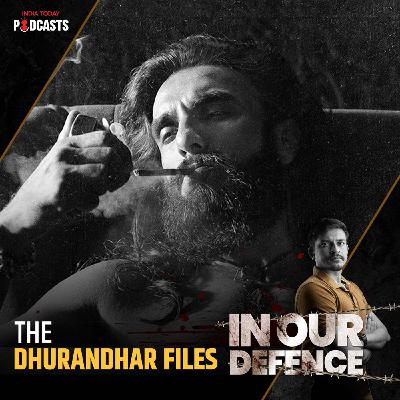


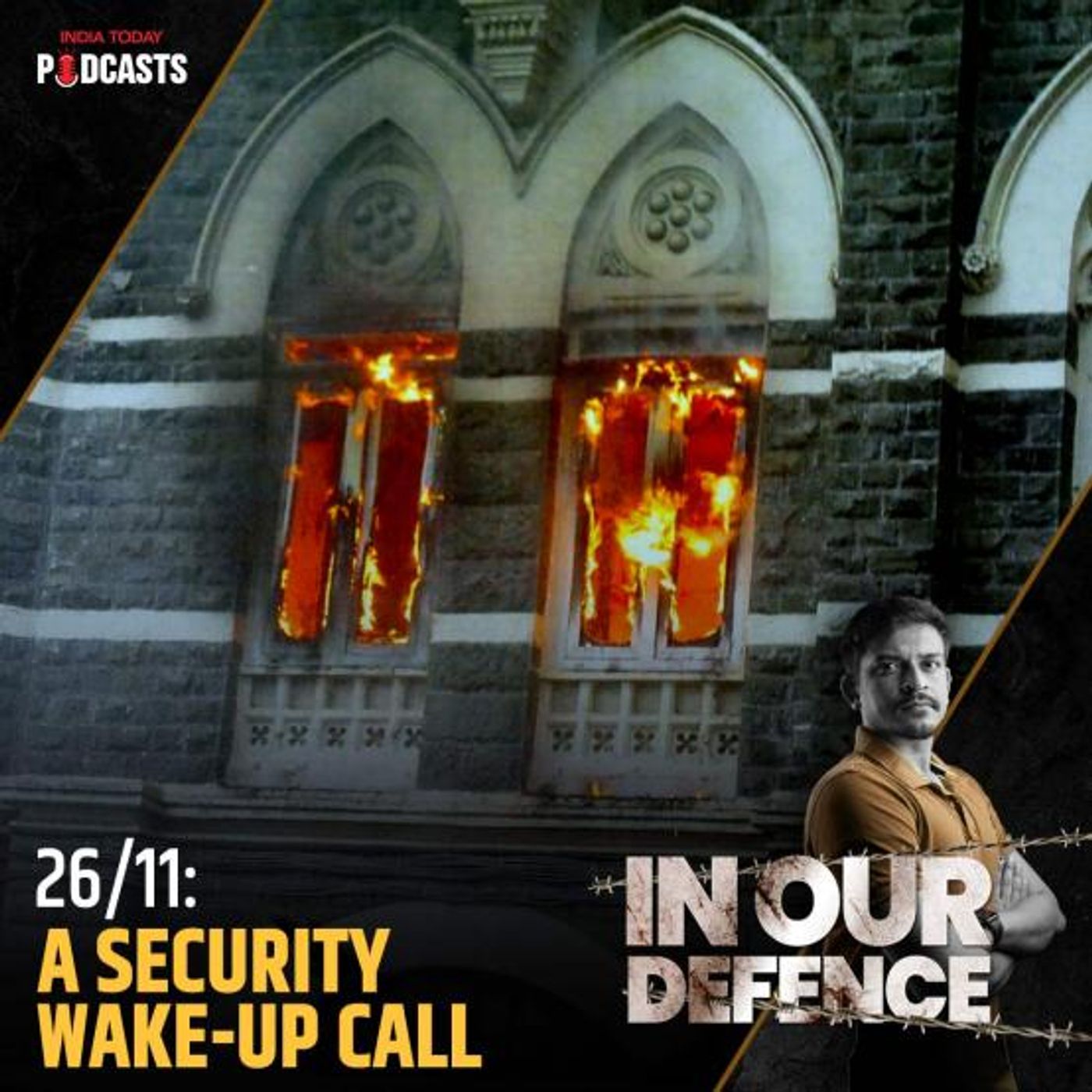

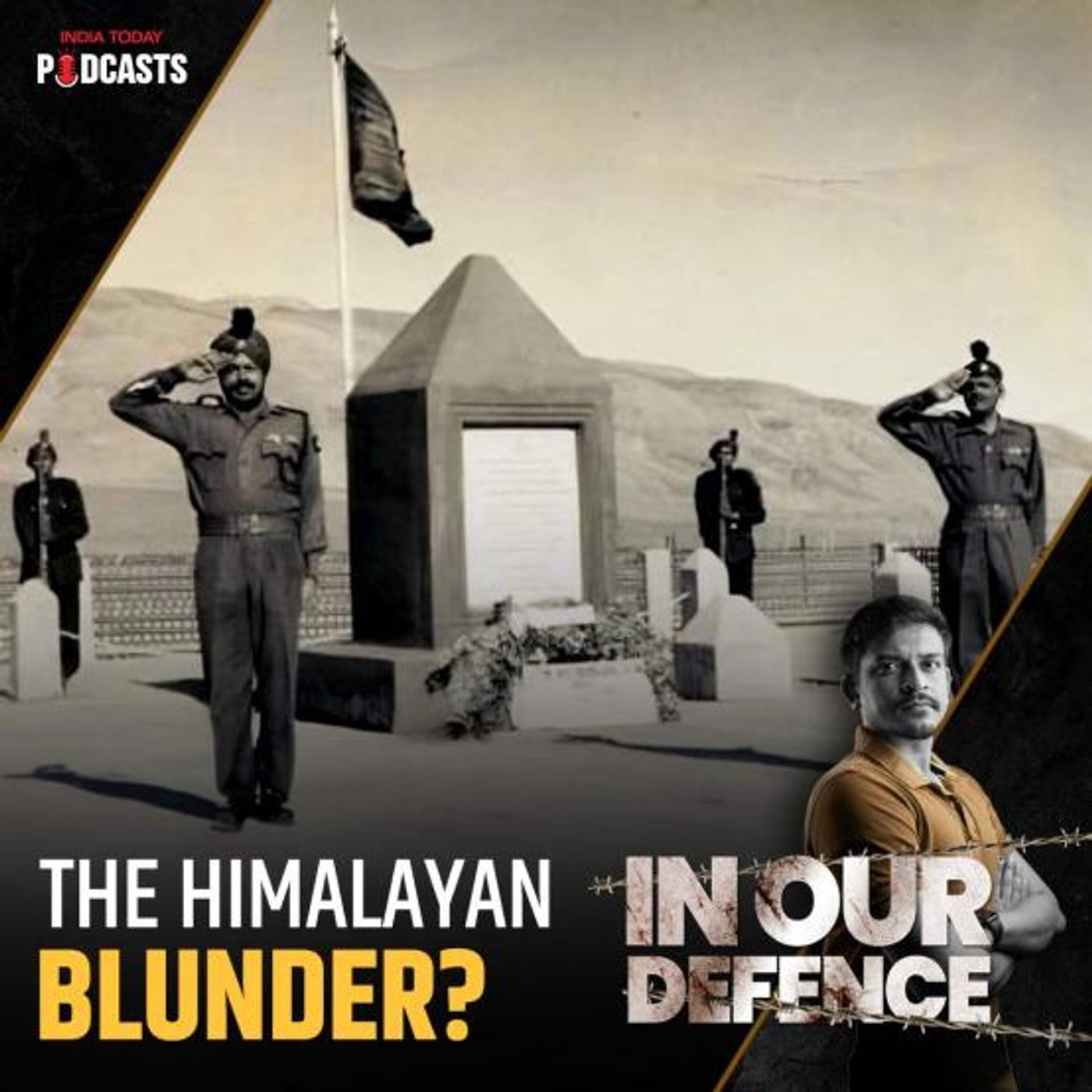


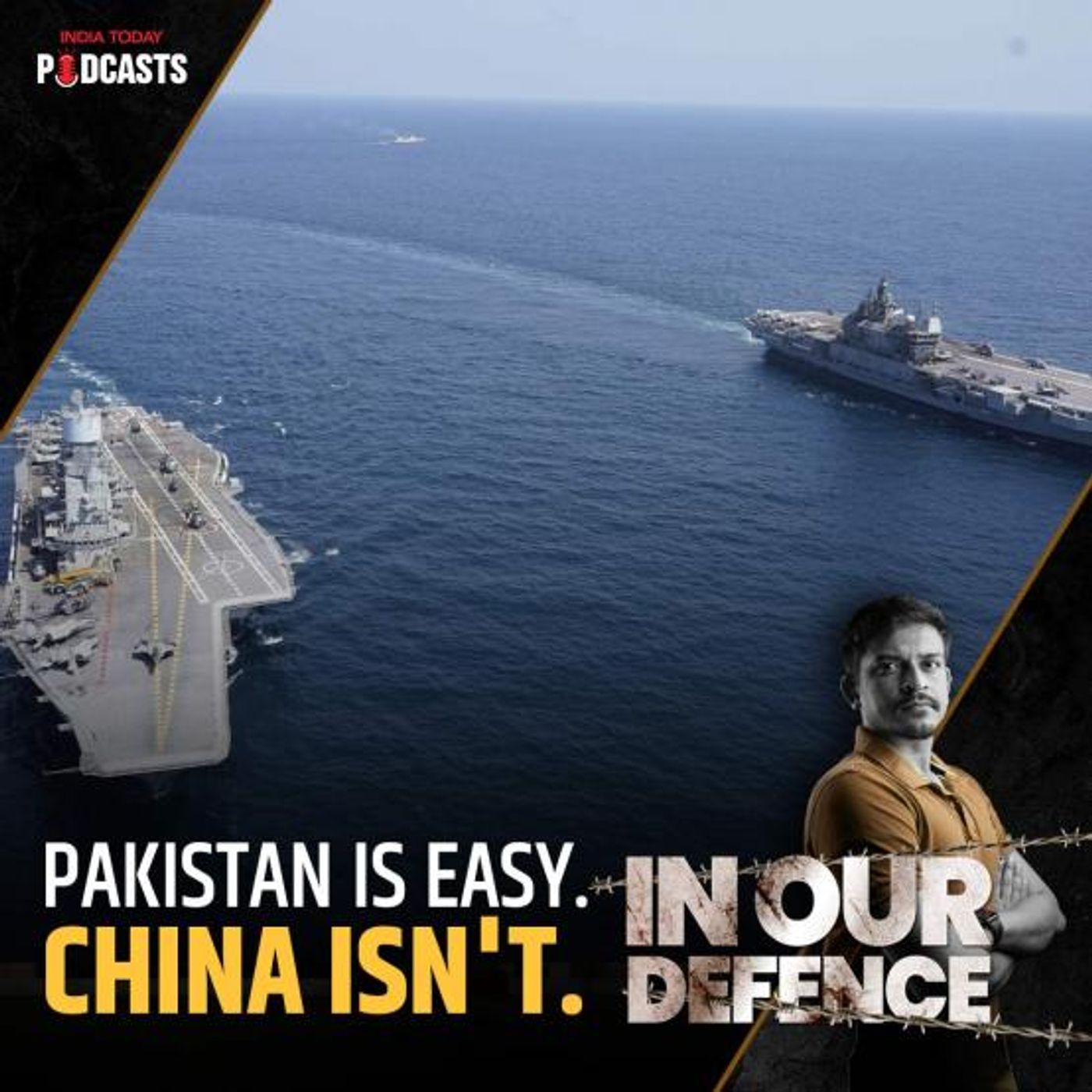
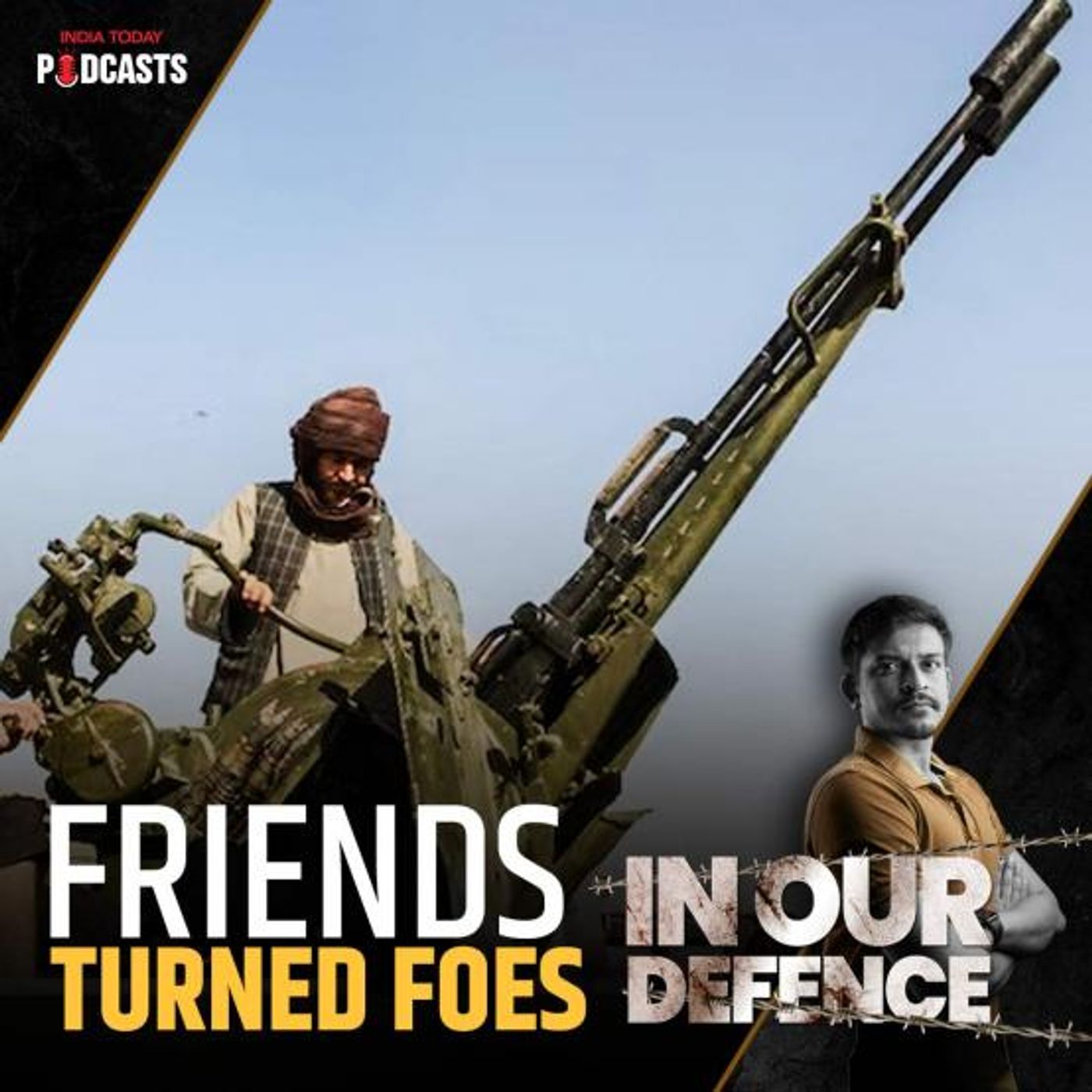




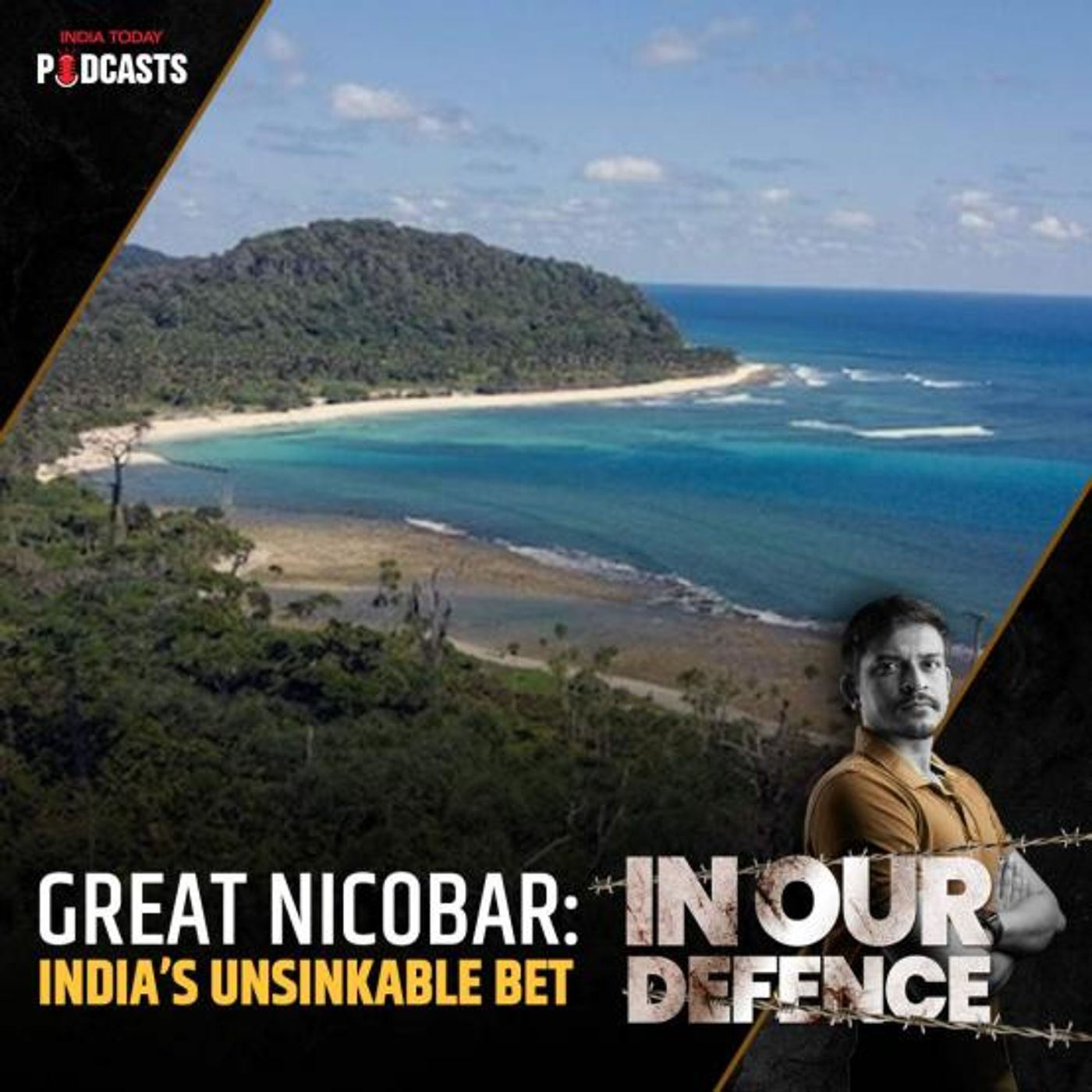
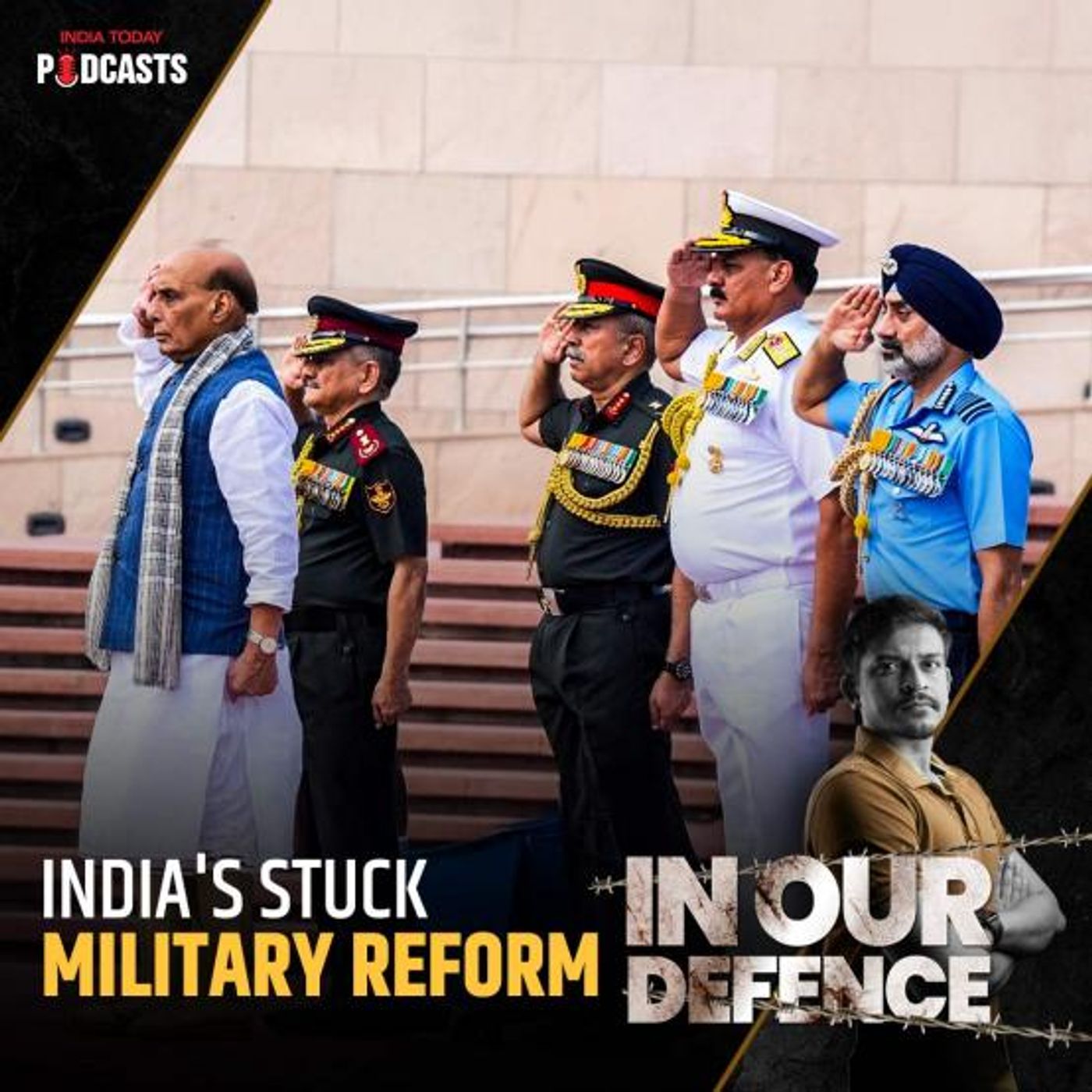







Jai hind!! 🇮🇳
these episodes are so knowledgeable!